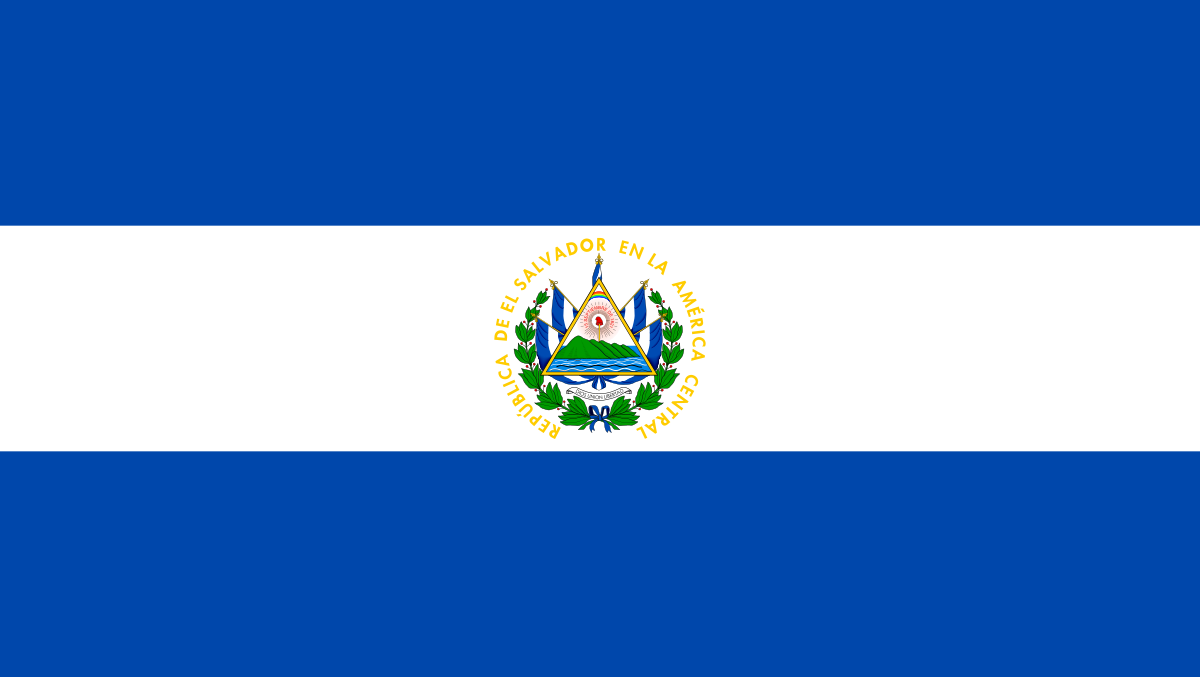The color scheme of the flag of El Salvador carries a profound historical and cultural significance that resonates with its people.
The upper blue stripe is a portrayal of the expansive sky stretching above the nation and the vast Pacific Ocean that graces its coastline. This celestial and marine expanse serves as a metaphor for the collective dreams, ideals, and ambitions of the nation, projecting a vision of a more promising future. Additionally, the blue stripe embodies core values such as truth, justice, and the unwavering loyalty that binds the Salvadoran populace.
In contrast, the lower white stripe embodies a symbolism of purity, tranquility, and solidarity among the diverse communities that form the fabric of El Salvador. It signifies an enduring yearning for harmony and collaboration, underlining the nation's commitment to unity.
Central to the flag is the national coat of arms, a meticulously crafted emblem that encapsulates various elements of paramount importance to El Salvador.
The golden triangle occupies a central position, representing the bedrock principles of a just and harmonious society: equality, liberty, and fraternity. This emblematic triangle stands as a reminder of the nation's commitment to fostering an inclusive and equitable environment for all its citizens.
Nestled within the triangle lies a depiction of a lush green valley, a profound portrayal of El Salvador's fertile landscapes and abundant natural resources. This valley serves as an emblematic heart, pulsating with the potential for growth, prosperity, and the realization of collective aspirations.
Behind the valley, a backdrop of serene blue signifies the encompassing Pacific Ocean, a testament to El Salvador's maritime heritage, trade opportunities, and its open embrace of the world.
The representation of five volcanoes within the valley unveils a tapestry of symbolism that runs deep into the roots of Salvadoran identity.
These volcanoes are not mere geographical features; they encapsulate the astonishing natural beauty of El Salvador's terrain, invoking both a sense of magnificence and humility when confronted with the formidable forces of the Earth.
Furthermore, these volcanic sentinels are interwoven into the cultural fabric and historical narrative of El Salvador. They find mention in indigenous myths and narratives, and their influence has left an indelible mark on the nation's landscapes and the lives of its people.
The presence of these volcanoes serves as an enduring reminder of the trials and tribulations that have beset the Salvadoran populace across history. While volcanic activity can unleash destruction, it also bestows fertility upon the soil, ushering in opportunities for rejuvenation and growth. This spirit of resilience and the ability to overcome adversity are mirrored in the coat of arms, encapsulating the essence of El Salvador's enduring spirit.
Above the mountains, a radiant sun ascends, casting its effervescent rays upon the land. This rising sun is imbued with symbolism, representing a new beginning, progress, and the boundless potential for a more luminous future. It embodies the essence of hope, optimism, and the promise of a better tomorrow.
Encircling the coat of arms, a laurel wreath evokes notions of victory, honor, and accomplishment. This wreath stands as a testament to the pride that the Salvadoran people hold in their history, culture, and achievements.
Ultimately, the flag of El Salvador stands as an emblematic embodiment of unity, diversity, and shared national identity. It is a poignant synthesis of the nation's captivating natural beauty, its rich historical heritage, and its aspirations for peace, advancement, and prosperity. Through its intricate tapestry of symbolism, the flag serves as an enduring source of inspiration and a rallying symbol, uniting generations with a sense of pride and resilience that defines the Salvadoran spirit.
Last Updated on: August 18, 2025
